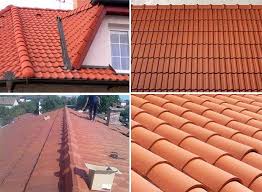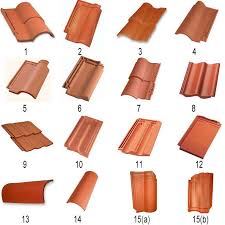Functions and Features of Roof Tile Vacuum Extruder
Roofing is an essential aspect of any building, providing protection against the elements and enhancing the overall aesthetic appeal. Roof tiles are a popular choice for their durability, longevity, and versatility. In the manufacturing process of roof tiles, a crucial machine called the roof tile vacuum extruder plays a significant role. This article aims to explore the functions and features of a roof tile vacuum extruder, shedding light on its importance in the roofing industry.
I. What is a Roof Tile Vacuum Extruder?
A. Definition and Purpose
A roof tile vacuum extruder is a specialized machine used in the production of roof tiles. It is designed to extrude clay or concrete mixtures into specific shapes and sizes, ensuring uniformity and precision. The primary purpose of a roof tile vacuum extruder is to create high-quality roof tiles that meet industry standards and customer requirements.
B. Components
1. Hopper: The hopper is the container where the clay or concrete mixture is loaded before the extrusion process. It ensures a continuous supply of material to the extruder.
2. Auger: The auger is a rotating screw-like component responsible for pushing the material from the hopper towards the extrusion chamber.
3. Extrusion Chamber: The extrusion chamber is where the actual extrusion process takes place. It consists of a die that shapes the material into the desired form.
4. Vacuum System: The vacuum system plays a crucial role in the extrusion process. It removes air and moisture from the material, enhancing its consistency and reducing the risk of defects.
5. Cutting Mechanism: After the extrusion process, the roof tiles need to be cut into individual pieces. The cutting mechanism, often automated, ensures precise and accurate cutting.

II. Functions of a Roof Tile Vacuum Extruder
A. Material Preparation
Before the extrusion process, the roof tile vacuum extruder prepares the clay or concrete mixture. It ensures the right consistency, removing impurities and air bubbles that could affect the quality of the final product. The machine also allows for the addition of colorants or additives to achieve desired aesthetics or improve performance.
B. Extrusion
The primary function of a roof tile vacuum extruder is to extrude the prepared material into the desired shape and size. The auger pushes the material towards the extrusion chamber, where it passes through the die. The die imparts the specific shape and texture to the roof tile, ensuring consistency across all produced tiles.
C. Vacuuming
The vacuum system in a roof tile vacuum extruder plays a crucial role in ensuring the quality of the extruded tiles. By removing air and moisture from the material, the vacuum system enhances the density and strength of the tiles. It also minimizes the risk of defects such as cracks or warping, resulting in a more durable and reliable end product.
D. Cutting and Shaping
Once the extrusion process is complete, the roof tiles need to be cut into individual pieces. The cutting mechanism of the roof tile vacuum extruder ensures precise and accurate cutting, maintaining uniformity across all tiles. Some advanced extruders also offer additional shaping capabilities, allowing for the creation of various tile profiles to meet different architectural styles.

III. Features of a Roof Tile Vacuum Extruder
A. Automation and Control
Modern roof tile vacuum extruders often come equipped with advanced automation and control systems. These features allow for precise control over the extrusion process, ensuring consistent quality and reducing human error. Automated cutting mechanisms further enhance efficiency and accuracy.
B. Versatility
Roof tile vacuum extruders are designed to accommodate various types of clay or concrete mixtures, offering versatility in production. They can handle different tile profiles, sizes, and textures, allowing manufacturers to cater to a wide range of customer preferences and architectural requirements.
C. Energy Efficiency
Many roof tile vacuum extruders are designed with energy efficiency in mind. They incorporate features such as energy-saving motors, optimized heating systems, and insulation to minimize energy consumption and reduce operational costs.
D. Durability and Maintenance
Roof tile vacuum extruders are built to withstand the demanding nature of tile production. They are constructed using high-quality materials and components, ensuring durability and longevity. Additionally, manufacturers often provide maintenance and support services to keep the machines running smoothly and efficiently.

Conclusion
Roof tile vacuum extruders play a vital role in the manufacturing process of roof tiles. Their functions, such as material preparation, extrusion, vacuuming, and cutting, ensure the production of high-quality and uniform roof tiles. With features like automation, versatility, energy efficiency, and durability, these machines contribute significantly to the roofing industry. As technology continues to advance, roof tile vacuum extruders are expected to evolve further, enabling manufacturers to meet the ever-growing demands of the market.
Discussion On The Application of Roof Tile Vacuum Extruder in The Construction Industry
www.yxkelijixie.com
Yixing Keli Building Materials Machinery Equipment Co., Ltd.
Post Comment